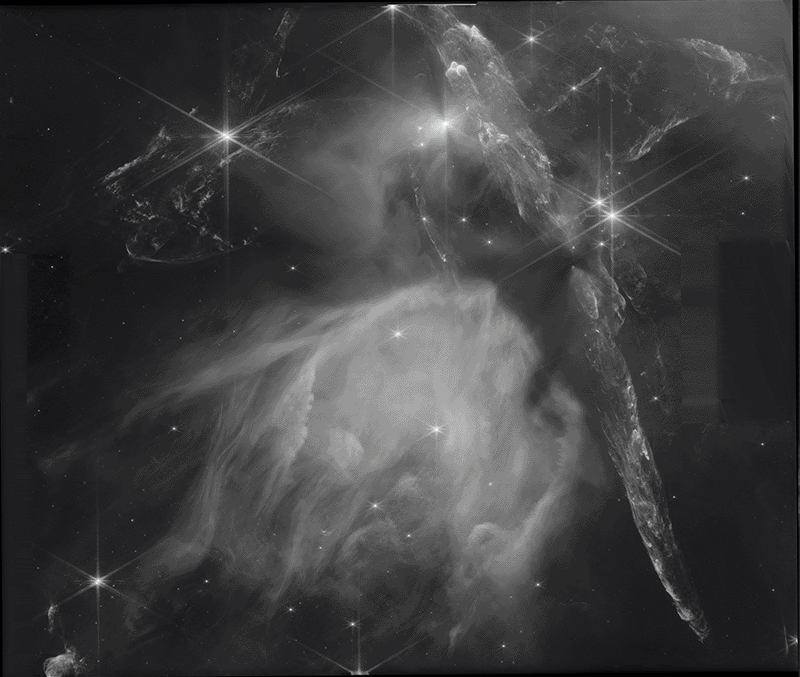How Scientists Bring Webb’s Images to Life in Beautiful Color
The James Webb Space Telescope YouTube channel released a fascinating new video this week that explains how Space Telescope Science Institute (STScI) science visuals developers Joe DePasquale and Alyssa Pagan transform Webb’s black-and-white image data into full-color composites.
The video and its accompanying article explain how DePasquale and Pagan download images from Webb’s cameras, stretch and rescale images, remove artifacts, and precisely apply color to each layer of the picture.
Much more detail about the image processing workflow and the scientific and artistic decisions that DePasquale and Pagan make are covered in PetaPixel’s recent in-depth interview with them.
Occasionally, when people first learn that space telescopes like Webb do not capture full-color images and instead shoot in black and white, it is tempting to conclude that colors in Webb photos are false or fake. However, that is an oversimplification.
The colors that people see in Webb’s images are built using chromatic ordering. This is the process of assigning the order of wavelengths of light that humans can observe to Webb’s images, which are captured in infrared light that people cannot see. For example, within visible light, shorter wavelengths are bluer and longer wavelengths are redder, so people like DePasquale and Pagan assign corresponding colors to the shortest and longest wavelengths of infrared light detected by Webb.
Webb includes numerous filters that allow specific wavelengths of light to pass through and strike the telescope’s image sensors. Each filter has a corresponding image, which is treated as a layer when processing the final image. Each layer gets a color based on chromatic ordering, and when the layers are combined, the resulting image is full of vibrant, rich color.
However, that is not the end of the story for each image. Photos are edited further for visual appeal and to ensure that the scientific messaging of each image is realistically shown. Much like typical photographers want their images to look as good as possible, that is also true for DePasquale and Pagan.

“There’s a balance between art and science. From the artistic side, having a clear separation of those colors and having the colors assigned in such a way that when they’re all added together, they come out to white; that’s really important for the aesthetics of an image. On the science side, colors being clear and separated enough so that you can make scientific inferences based on the colors you’re seeing, that’s where that balance comes in. There can be tension there. It may require a hue adjustment a little bit one way or the other to get separation,” DePasquale tells PetaPixel.
An essential part of Webb’s mission is making all the data it collects available to the public. This means that processing Webb’s images is not reserved exclusively for professionals like DePasquale and Pagan. Anyone can join in on the fun using freely available datasets and software.